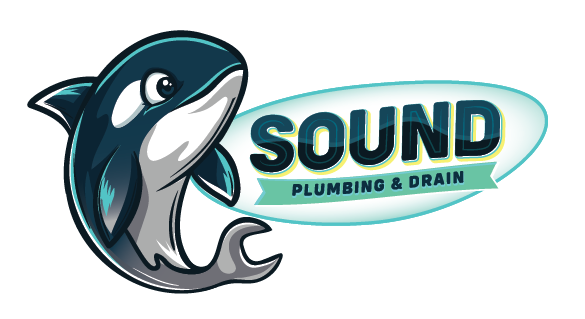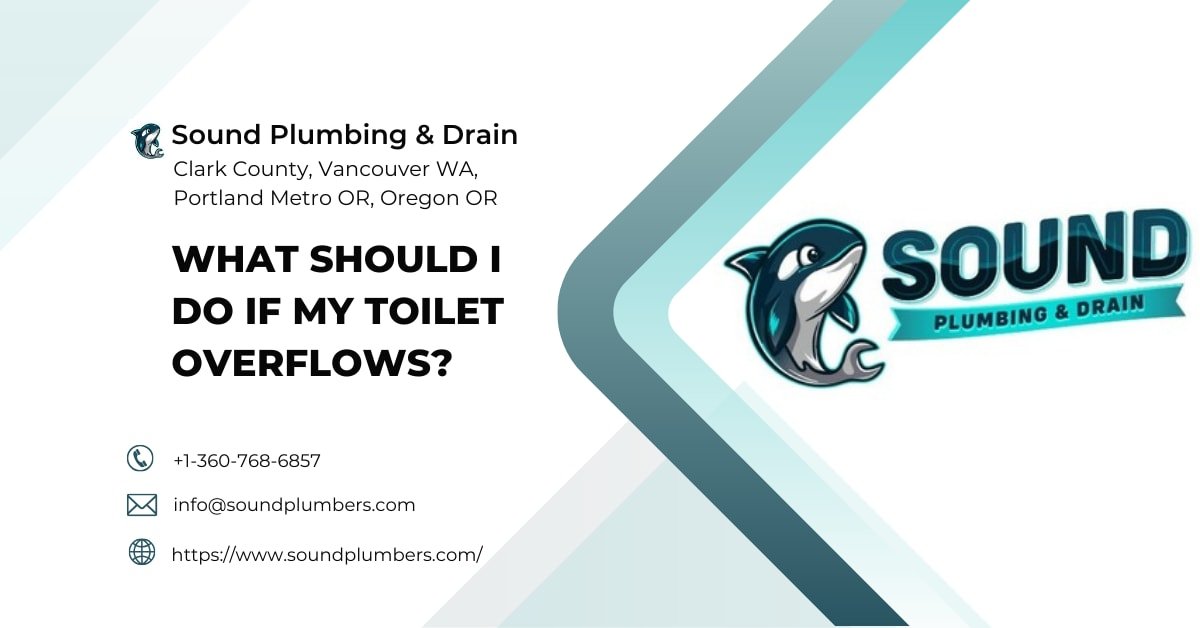Why Toilets Overflow and How to Handle Them Quickly
When your toilet overflows, it’s more than just a nuisance as it can lead to costly water damage if not addressed promptly. Understanding how to manage the situation step-by-step can save you both time and trouble, and it starts with knowing the right actions to take the moment you spot the issue.
Here's What We Have Covered In This Article
What Causes Toilets to Overflow?
A toilet typically overflows due to a blockage in the drain or a malfunction in the flushing mechanism. Common culprits include flushing unsuitable items, like wipes or sanitary products, or an internal issue such as a faulty float. Sometimes, the problem could even be related to a larger plumbing issue, like a sewer line blockage.
Immediate Steps to Stop the Water Flow
The first thing to do when your toilet starts overflowing is to stop more water from entering the bowl. Locate the shut-off valve, usually found near the base of the toilet, and turn it clockwise to halt the water supply. If the valve is difficult to access, remove the tank lid and push the rubber flapper down manually to stop water from refilling.
Why Acting Quickly Matters
Delaying action can result in water spreading across your bathroom floor, increasing the risk of damage to flooring, walls, and even adjacent rooms. The sooner you stop the water flow, the easier the cleanup and repair process will be.
Practical Tips for Preventing Future Issues
Simple practices, like only flushing toilet paper and avoiding non-flushable items, can reduce the likelihood of clogs. Regular maintenance and occasional checks of your toilet’s internal components can also help ensure smooth operation.
This proactive approach will not only keep your plumbing in good condition but also spare you the hassle of unexpected overflows. If you encounter repeated issues, consulting a professional plumber is often the best solution.
How to Contain and Clean Up After a Toilet Overflow
Once the water flow is under control, the next step is containing the mess and cleaning up thoroughly to avoid lingering damage or potential health hazards. Acting swiftly and effectively is key to keeping your bathroom safe and functional.
Steps to Contain the Overflowing Water
- Absorb Excess Water:
Use old towels, rags, or a mop to soak up as much water as possible. Place these materials around the toilet to prevent water from seeping into other parts of your home. - Protect Nearby Surfaces:
If water is pooling, ensure it doesn’t reach wooden flooring, carpet, or walls. Move items such as rugs and bins out of the way immediately to avoid contamination or permanent damage. - Dispose of Water Safely:
Wring out soaked towels or mops into a bucket and carefully empty the bucket into a sink or bathtub—avoid using the toilet while the issue is unresolved.
Thorough Cleaning is Essential
After containing the overflow, cleaning up effectively is critical for hygiene and preventing odours.
- Sanitise the Area:
Use a disinfectant or a bleach solution to clean all affected surfaces, including the toilet’s exterior, the floor, and nearby walls. Pay special attention to areas where water may have splashed. - Dry Thoroughly:
Once cleaned, use a dry towel or a fan to dry the area completely. Damp conditions can encourage mould growth, so ensure no moisture is left behind. - Dispose of Contaminated Materials:
Wash towels, cloths, or mop heads in hot water with a strong detergent or, if they’re heavily soiled, consider disposing of them.
Preventing Further Problems
Cleaning up after a toilet overflow can be labour-intensive, so preventing the situation from recurring is ideal. Avoid flushing unsuitable items, keep a plunger handy, and consider regular plumbing checks if overflows become a common issue.
Need advice on diagnosing what caused the overflow? Keep reading to learn how to identify and address the root of the problem.
Fast Plumbing Repairs in Your Neighborhood
Serving homes and businesses across Hazel Dell, Vancouver, Portland, and surrounding areas, our expert plumbers are ready to handle any issue. Contact us for fast, dependable service today!
Identifying the Cause of the Toilet Overflow
Understanding why your toilet overflowed is essential to fixing the problem and preventing it from happening again. Overflows are usually caused by a blockage, a faulty mechanism, or a more complex plumbing issue. By identifying the root cause, you can take the right steps to resolve it.
Common Reasons for a Toilet Overflow
- Clogged Drain or Pipe:
This is the most frequent cause. Flushing items such as wipes, sanitary products, or excessive amounts of paper can obstruct the flow of water and lead to a backup. - Faulty Flushing Mechanism:
The internal components of the toilet, such as the float or flapper, may not be functioning properly. A stuck flapper can allow too much water into the bowl, while a misadjusted float can cause constant overflows. - Sewer Line Blockage:
If multiple drains in your home are slow or backing up, the issue could stem from a blockage in the main sewer line. This is a more complex problem that requires professional attention. - Septic Tank Issues:
For homes with a septic system, a full or malfunctioning tank can prevent wastewater from exiting properly, causing overflows.
How to Diagnose the Problem
- Inspect the Bowl and Drain:
Look for signs of visible blockages in the bowl or the drain opening. A shallow water level often points to a blockage. - Check the Tank Mechanism:
Remove the toilet tank lid and inspect the float and flapper. Ensure the float isn’t set too high and that the flapper closes properly after flushing. - Monitor Other Drains:
If sinks, showers, or other toilets are also slow to drain, this may indicate a larger plumbing issue beyond the toilet itself. - Test Flushing:
After addressing visible issues, try a test flush to observe whether the water flows smoothly or backs up again.
When Professional Help is Needed
If the overflow persists despite your efforts, it’s likely time to call a professional plumber. Persistent clogs, sewer line issues, or septic tank problems require the tools and expertise of trained professionals.
Ready to tackle the problem yourself? The next section will guide you through effective DIY solutions for resolving common toilet overflows.
Effective DIY Solutions to Fix a Toilet Overflow
If your toilet is overflowing due to a simple clog or minor issue, there are practical steps you can take to resolve the problem yourself. With the right tools and techniques, you can often clear blockages and restore proper function without professional help.
Using a Plunger
- Choose the Right Plunger:
Opt for a flange plunger, designed specifically for toilets. Its extended rubber flap creates a better seal, making it more effective. - Prepare the Bowl:
Ensure there’s enough water in the bowl to submerge the plunger’s rubber cup. If the bowl is empty, add some water; if it’s too full, carefully remove excess water with a bucket. - Plunge Effectively:
Place the plunger over the drain hole, ensuring a tight seal. Push down firmly and pull up gently, creating suction to dislodge the clog. Repeat this action several times until the water starts to drain normally.
Using a Toilet Auger (Plumbing Snake)
- Insert the Auger:
Position the auger’s curved end into the toilet bowl’s drain. Turn the handle to feed the cable down the pipe. - Break Up the Blockage:
When you feel resistance, rotate the handle to break up or hook onto the clog. Continue turning while gently pushing the auger further. - Remove the Auger:
Carefully retract the auger and check if the water flows freely. Flush the toilet to confirm the problem is resolved.
Clearing a Minor Tank Mechanism Issue
- Adjust the Float:
Open the tank and inspect the float. If it’s set too high, adjust the mechanism to lower it, preventing excessive water from entering the bowl. - Check the Flapper:
Ensure the flapper closes securely after flushing. Replace it if it’s worn or damaged.
When DIY Solutions Work Best
These methods are most effective for simple blockages or minor issues with the toilet mechanism. However, they may not solve problems like sewer line blockages or septic tank malfunctions.
Prevention Tips While Fixing the Issue
- Avoid using chemical drain cleaners, as they can damage pipes.
- Keep non-flushable items out of the toilet to prevent future clogs.
- Work carefully to avoid scratching the toilet bowl or damaging internal components.
If these DIY steps don’t resolve the overflow, it’s time to consider professional assistance. The next section explains when calling a plumber is the best choice.
Plumbing Upgrades for Homes and Businesses
From water heaters to trenchless solutions, we serve communities like Hazel Dell, Salmon Creek, Vancouver, and Portland. Upgrade your system with our expert team—get a free quote now!
When to Call a Professional Plumber for a Toilet Overflow
While many toilet overflows can be resolved with DIY methods, certain situations require the expertise of a professional plumber. Knowing when to seek help can save time, prevent further damage, and ensure the issue is properly resolved.
Signs You Need a Professional Plumber
- Recurring Overflows:
If your toilet continues to overflow after repeated attempts to clear the clog, the problem could lie deeper in the plumbing system. - Slow Draining Across Multiple Fixtures:
When sinks, showers, or other toilets are also slow to drain or backing up, it’s often a sign of a blockage in the main sewer line. - Sewage Backup or Foul Odours:
If you notice wastewater coming back into the toilet or detect unpleasant smells, this could indicate a serious issue, such as a damaged sewer pipe or a septic system failure. - No Improvement After DIY Efforts:
If using a plunger or auger doesn’t improve the situation, professional tools like drain cameras or hydro-jetting may be needed to clear the blockage. - Water Damage or Leaks:
Overflowing water can seep into walls, floors, or ceilings, causing structural damage. A plumber can address both the clog and any related leaks.
Benefits of Professional Plumbing Services
- Advanced Tools and Expertise:
Professionals use specialised equipment, such as drain cameras, to locate and resolve issues quickly and accurately. - Long-Term Solutions:
A plumber doesn’t just fix the immediate problem—they also identify underlying causes, ensuring your plumbing system functions efficiently. - Emergency Services:
Many plumbing issues can’t wait, especially if water damage or sewage backup is involved. Reliable professionals offer prompt service to minimise risks.
How Sound Plumbing & Drain Can Help
As trusted experts, Sound Plumbing & Drain can handle everything from stubborn clogs to complex sewer line repairs. Their skilled team is equipped to diagnose the problem and provide fast, effective solutions tailored to your needs. Don’t let an overflow disrupt your day—professional help is just a call away.
By addressing the issue promptly and professionally, you’ll avoid prolonged inconvenience and potential damage. Ready to keep your toilet functioning smoothly? The final section offers practical tips for preventing future overflows.
How to Prevent Future Toilet Overflows
While fixing a toilet overflow is essential, preventing it from happening again is even better. With a few simple practices and routine care, you can ensure your toilet works smoothly and avoid the hassle of dealing with overflows in the future.
Flush Only What’s Meant to Be Flushed
The easiest way to prevent blockages is to use your toilet only for flushing toilet paper and waste. Items like wipes (even flushable ones), sanitary products, cotton pads, and paper towels can cause clogs and should be disposed of in the bin.
Use the Right Amount of Toilet Paper
Excessive amounts of toilet paper can overwhelm your plumbing. Encourage everyone in your household to use only what’s necessary and, if needed, flush twice for larger amounts.
Schedule Regular Plumbing Inspections
Periodic inspections by a professional plumber can help identify potential issues before they become problems. They can check for slow drains, inspect your toilet’s internal components, and assess the condition of your plumbing system.
Keep a Plunger Handy
Having a reliable plunger nearby can help you quickly address minor clogs before they escalate into an overflow. Choose a flange plunger, as it’s specifically designed for toilets and works more effectively than standard models.
Be Mindful of Warning Signs
Address small issues before they turn into larger ones. Signs like slow draining, bubbling noises, or a toilet that frequently clogs can indicate problems that need attention. Tackling these early can save you from an overflow.
Upgrade Old Plumbing Fixtures
Older toilets and plumbing systems may struggle with modern demands. Upgrading to newer, water-efficient models can reduce the risk of overflows and improve overall performance.
Final Tips for Peace of Mind
Prevention is all about consistency and attention to detail. By adopting these habits, you’ll minimise the risk of overflows and keep your toilet functioning at its best. If problems do arise, having a trusted plumber like Sound Plumbing & Drain to turn to ensures you’re never caught off guard.
With these simple preventative measures, you’ll enjoy a worry-free plumbing system and a bathroom that stays dry and clean.
Keep Your Plumbing in Top Shape with Expert Maintenance
Our maintenance services cover areas within a 25-mile radius of Hazel Dell, including Vancouver, Battle Ground, and Portland. Schedule a visit today and prevent costly breakdowns.





